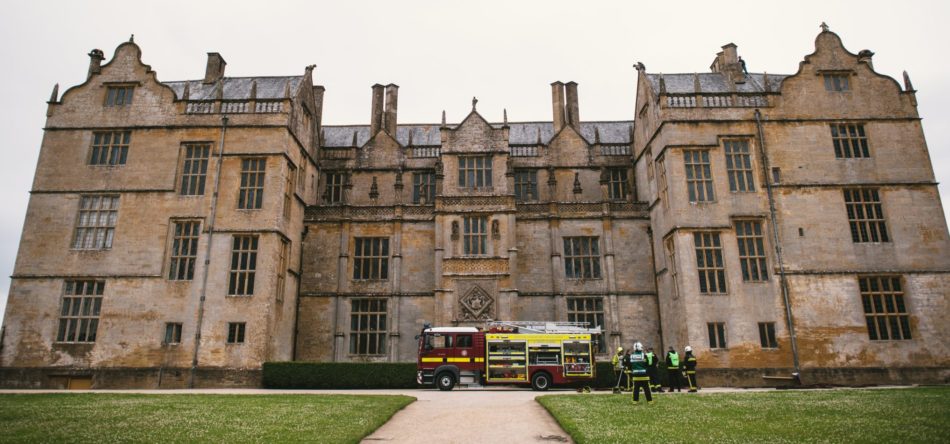Devon & Somerset Fire & Rescue Service has issued advice on protecting heritage buildings against fire.
Marking the one-year anniversary of a fire that destroyed the UK’s oldest hotel – the Royal Clarence Hotel – the FRS is emphasising the importance of conducting regular fire-risk assessments.
(In the wake of the Royal Clarence Hotel blaze, fire safety consultant Alan Cox posed a series of questions that need answering if lessons are to be learned.)
Built with long-abandoned methods and materials, heritage architecture poses unique challenges and risks in the built landscape when it comes to fire engineering.
Things become more complicated still as structures are reinforced and adapted for modern use over time.
Priceless architecture
And the cost of damage caused by fires extends beyond financial costs to the loss of priceless architecture and artefacts of enormous cultural import.
“Older buildings have unique features such as hidden voids and cavities supported by dry timber construction,” said Paul Bray, community safety protection manager at Devon & Somerset FRS. “Fire can easily travel undetected within these voids.
“The challenges of fighting a fire in a terrace of ‘heritage’ or buildings of substantial age are substantial. The fact that the fire is hidden also makes it almost impossible to tackle internally and externally without a major dismantling of the building fabric.
“Heritage is all that has been passed to us by previous generations. The term has become synonymous with the places, objects, knowledge and skills we inherit that are valued for reasons beyond their mere utility.” Historic England
While responsible persons are limited in what they can do to protect buildings that were built with little consideration for fire safety, there are still measures they can take to reduce the risk and impact of fire, suggests Bray.
“Even with the most attentive fire prevention and protection measures (such as fire alarms and fire separation), it cannot always be guaranteed that a fire will be contained and prevented from causing destruction. It can be significantly reduced through by the development of a comprehensive pre-survey of the impact on surrounding buildings during the construction phase.
“We therefore advise that a full set of records, drawings, photos and other information is stored and is made available to us for use in any heritage building in the event of a fire. This would contribute to forming the basis of how the service will deal with each building in the event of a fire.”
Devon & Somerset FRS notes that there is no standardised format for recording or presenting the findings of a fire risk assessment. However, those responsible for protecting heritage buildings should always produce and regularly review clear and comprehensive documentation. Once the risks are identified and assessed, they can then set out to reduce them.
Fire risks in heritage buildings
Devon & Somerset FRS has set out the following risks to consider relating to heritage buildings:
- Sources of ignition and fuel
- Potential for fire to spread through the building
- Adequacy of the fire alarm system
- Means of access and escape
- In rural areas: Water supplies and access for fire appliances
- Any valuable contents you wish to prioritise
Sometimes seen as disruptive to the building’s original fabric, protective measures taken are not always welcomed in the heritage sector, admits Devon & Somerset FRS. Physical installation of systems can also be seen as challenging.
However, you can take suitable protective measures that are sympathetic to the building’s historic fabric of the building.
The fire safety management plan should incorporate a business continuity plan, Devon & Somerset FRS advises. Should a fire occur, restoration work can then proceed promptly.
Being prepared for the worst-case scenario will vastly improve your chances of recovering quicker recovery rate.
Devon & Somerset FRS offers further guidance on heritage buildings here.
2023 Fire Safety eBook – Grab your free copy!
Download the Fire Safety in 2023 eBook, keeping you up to date with the biggest news and prosecution stories from around the industry. Chapters include important updates such as the Fire Safety (England) Regulations 2022 and an overview of the new British Standard for the digital management of fire safety information.
Plus, we explore the growing risks of lithium-ion battery fires and hear from experts in disability evacuation and social housing.


